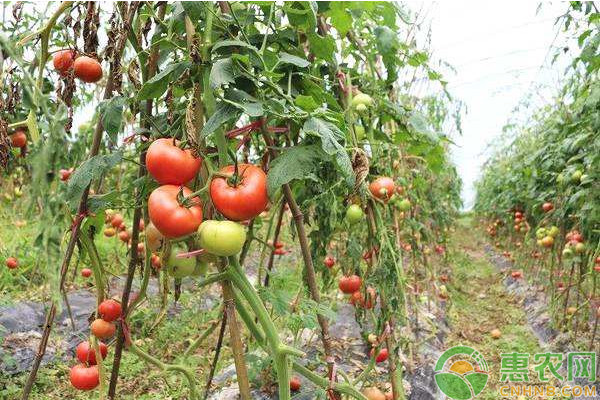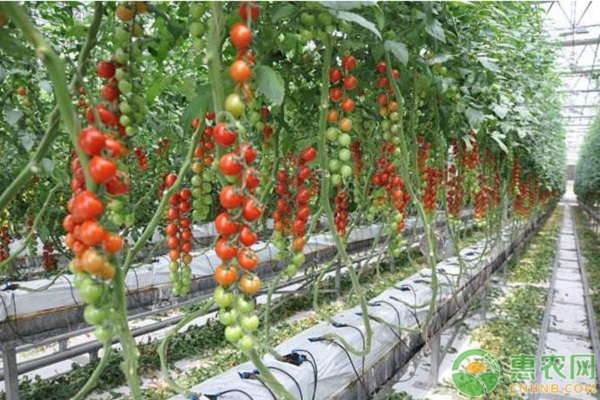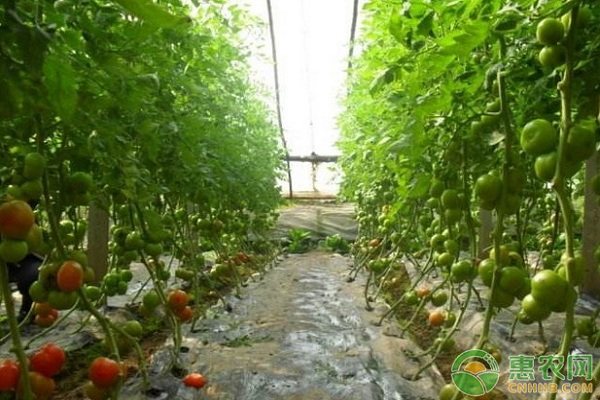How to cultivate delicious tomatoes? Tomatoes, also known as tomatoes, are nutrient-rich vegetables that can eliminate fatigue and slim down. Here, Hui Nongwang Xiaobian and the friends of the farmers can easily understand the cultivation methods and techniques of the tomatoes. First, the requirements of planting conditions Temperature Tomatoes have an optimal growth temperature of 24 to 26 degrees. 2. Lighting Tomatoes are extremely sensitive to light, and they also like light. Only when there is enough light, can it grow strong and strong. 3. Moisture Tomatoes are deep-rooted plants that are both afraid of phlegm and drought. Therefore, the groundwater content is preferably low and the water supply must be uniform. Second, cultivation techniques Sowing period The spring sowing time of tomatoes is generally between the end of January and February, and the autumn is between July and August. Winter sowing is only suitable for low-altitude hilly areas, etc., usually from October to November. 2. Seed disinfection Seed disinfection is an effective measure to reduce the spread of disease. When disinfecting, wrap the seeds with gauze, put them into 50 warm water (the temperature remains unchanged), dip them for 10 minutes or put them in 10% sodium phosphate solution for 20 minutes, then take them out, rinse them with water, and put them in warm water at 30 °C. Dip for 2 to 3 hours and remove the dried stem. 3. Seedling management It should be determined according to different climatic conditions, such as winter planting or early spring seedlings to be cold-proof, covered with plastic film with small arch shed; while summer and autumn planting seedlings should focus on high temperature and heavy rain, and cover with sunshade nets. In the process of nursery, it is necessary to properly topdress the fertilizer, generally combined with watering, drenched with mature urine water or 0.1% to 0.2% urea water. At the same time, in the seedling stage, apply 600 times of chlorothalonil and add 1000 times of Lego fruit to spray 2 to 3 times. Third, soil preparation, planting Tomato planting areas should be selected as rice or uncultivated crops such as Solanaceae, peanuts, soybeans, sesame seeds, radishes and other crops. Apply sufficient base fertilizer before planting, 1000 kg of decomposed pig cow dung and 50-100 kg of superphosphate per acre. Mix well and spread it on the kneading surface, and mix it into the soil. The crepe size can be 1.3 to 1.7 meters, and the second line is planted. The plant spacing is 40 to 50 cm. Early sun is sufficient, it can be properly planted, and 1,500-2000 plants are planted in acres. Or can be used alone, the plant spacing is 20 ~ 25 cm, about 3000 plants per mu. In winter, the tomato should be covered with plastic film. Because of the inconvenient topdressing, it is especially important to apply the base fertilizer once when the soil is smashed, and the delayed organic fertilizer is the main. Other measures are basically consistent with open field cultivation. Fourth, Daejeon Management Fertilize Tomatoes are the fruits of successive growth. In addition to the application of base fertilizer, there should be sufficient topdressing. Generally, after the recovery of the colonization potential (within 1 week after the planting), the topdressing is started, 8 to 10 days apart. Before the result, the fertilizer should not exceed 5 kg per mu. After the first ear is swollen, appropriate fertilizer is applied. When the second and third ear fruits are swollen, more nutrients are required. The top dressing should be heavier, the amount of phosphorus and potassium fertilizer should be increased, and the top dressing should be used to ensure the fruits of the 4th, 5th and 6th ears. The need to grow up. On the basis of applying the base fertilizer, the total amount of topdressing per mu of tomato is 50 kg of urea, 70 kg of potash or 100 kg of compound fertilizer plus 30 kg of potash. 2. Water management Do deep sorghum planting, and open the ring field around. When watering, it should be watered one by one, and less water should be used. If you want to fill the water, it should be carried out in the evening, and it is better to use the horse water. After staying in the ditch for 1 to 2 hours, drain it and keep the soil moist. Because irrigation is very likely to cause the spread of bacterial wilt, it should be used less. 3. Soil and weeding Soil cultivation is an indispensable task for growing tomatoes. Generally, it is necessary to cultivate soil 2 to 3 times, combined with fertilization and weeding. Weeds can be covered with soil to reduce the root damage caused by weeding. 4. Scaffolding and tying When the tomato grows to a height of 30 to 40 cm, it should be inserted into the stand and then tied. 5. Pruning, topping, thinning and thinning The single stem is left with only one trunk, and the other lateral branches are removed. The double stems retain the lateral branches of the first leaf under the first inflorescence, and the other branches are removed. Due to the large number of tomatoes, if the term grows, there will be uneven fruit size and many secondary products. Therefore, the flower should be thinned and thinned. Under normal circumstances, each branch can leave 5 to 7 fruits. The above is the high-yield cultivation method of tomatoes. I hope that everyone will pay more attention to detail management in the future cultivation process and also get a good yield! Cleaned Squid Tubes,Frozen Squid Tube,Frozen Cleaned Squid Tubes,Stuffed squid tubes ZHOUSHAN JING YUAN FOOD CO.,LTD , https://www.genho-food.com

